Along the Beach at Bungalow Town.
Ever wondered where those bungalows pictured in Shoreham’s old postcards were? Relive the view our predecessors saw and even meet them by joining our celebrated Shoreham Time Walks. See those wooden structures as they once were, some little more than simple wood and corrugated iron shacks, others extravagant and imaginative in design. Those wishing to participate should present themselves promptly at 1pm at the east end of Widewater on Saturday 10th August in any year between 1900 and 1920……………………….
Bungalow Town may not have started to develop fully until the 1920’s but early bungalows were already on the beach in the 1890’s and by 1910 there were over 90. Most were wooden, some only survived a few years, all were susceptible to fire and a good few burnt down but were then promptly replaced. Many were altered in appearance with extensions and as they changed hands the bungalow names were also often changed. Most of the following photos are of similar views between 1900 and 1920 which illustrates the changes that took place in a short space of time. To help identify the whereabouts of different parts of the beach a modern day map and today’s road names are used.

A. Widewater to the Church of the Good Shepherd
The walk starts at the eastern end of Widewater where the car park is now looking southwest to Lancing and the backs of the bungalows on the beach. On the left is a large, impressive Tudor style wooden house named La Morna.

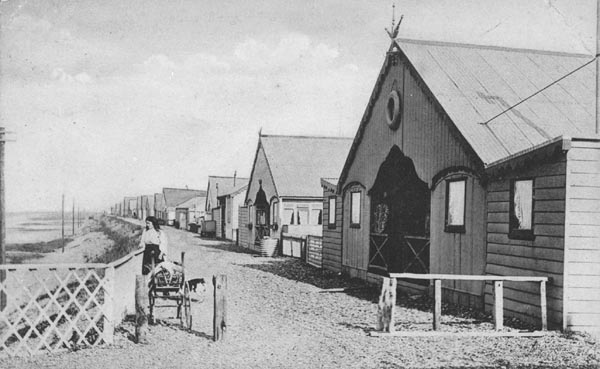
Moving over to the beach and looking further west were the bungalows that stood along the Lancing Beach front; there were over 40 bungalows along here.
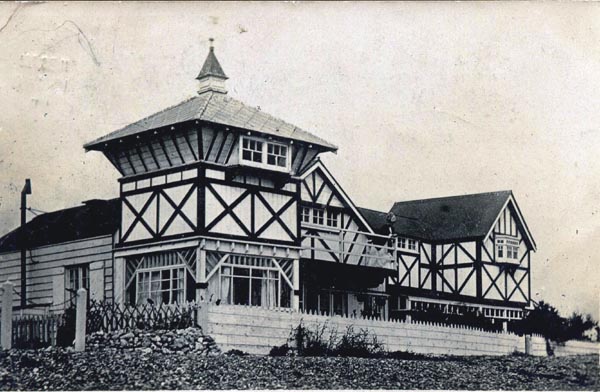
Returning eastwards towards Shoreham brings us back to the front of La Morna.
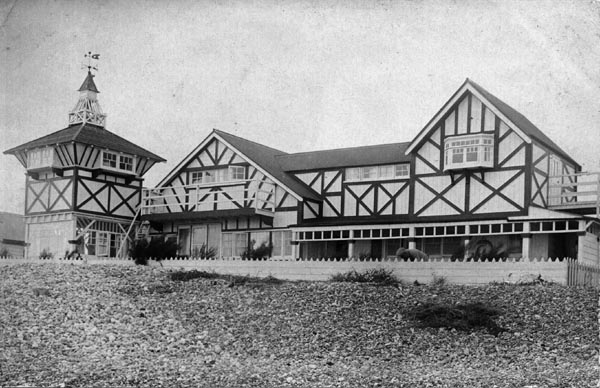
Walking past it gives a good impression of the size of this large wooden construction.
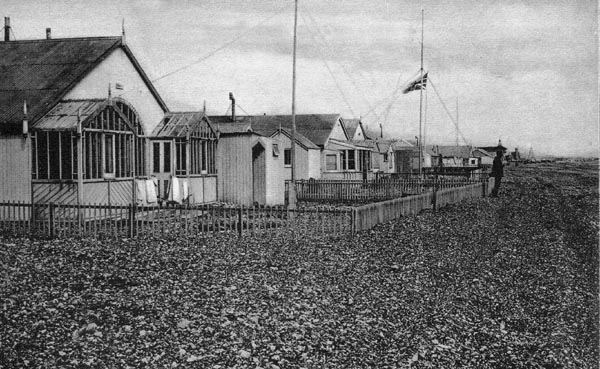
Now looking along the line of bungalows ahead a tower-like building can just be made out in the distance to the right of the man’s head – keep looking out for that as you proceed.
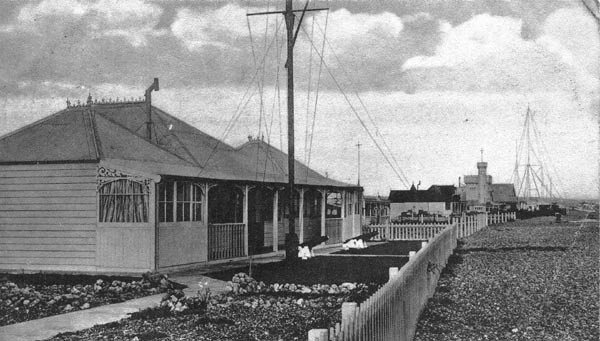
Nearer now to the building with the tower – many of these dwellings had masts for flags.
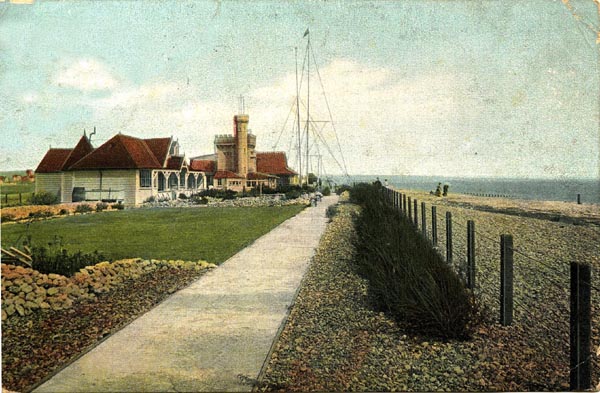
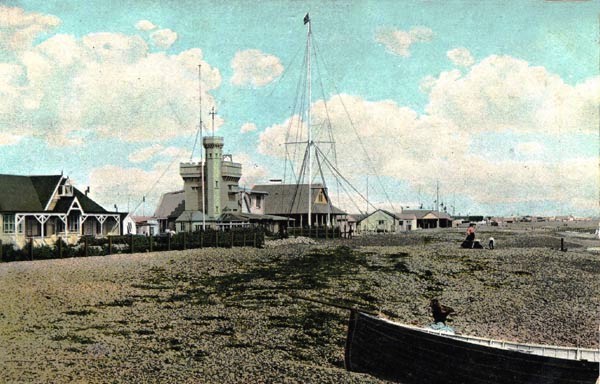
In fact built to look like a castle with its’ own mast, taller than any others with a mass of supporting ropes.
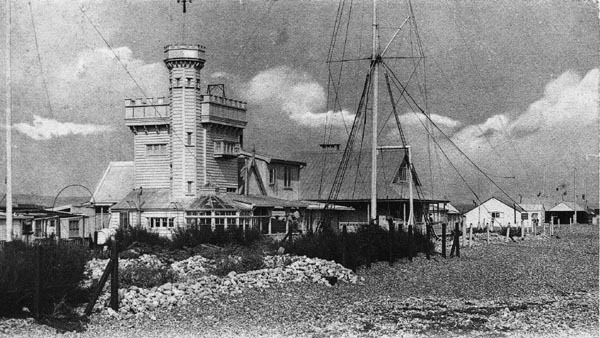
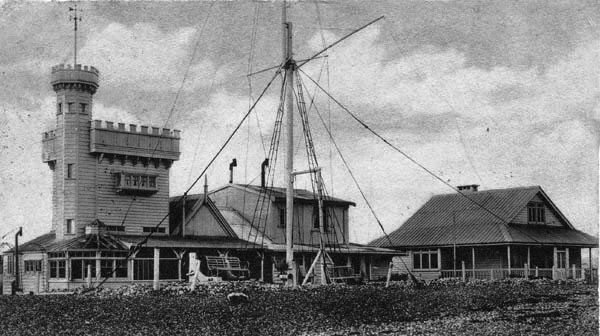
It had the most uncastle-like name Rhodesia, to reflect the surname of its owner Agnes E. Rhodes and her family. Without doubt the most unusual and most often photographed of all the bungalows, postcards of it were produced in their thousands.
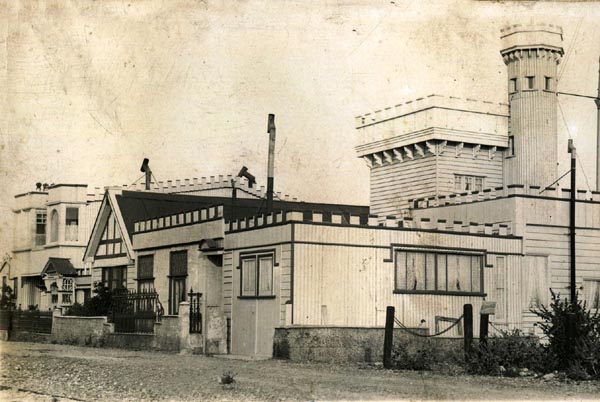
Take a quick detour round the back to see more of the castellated construction. It was this view that Pathe News later recorded one night in 1923 when the whole building burned down.
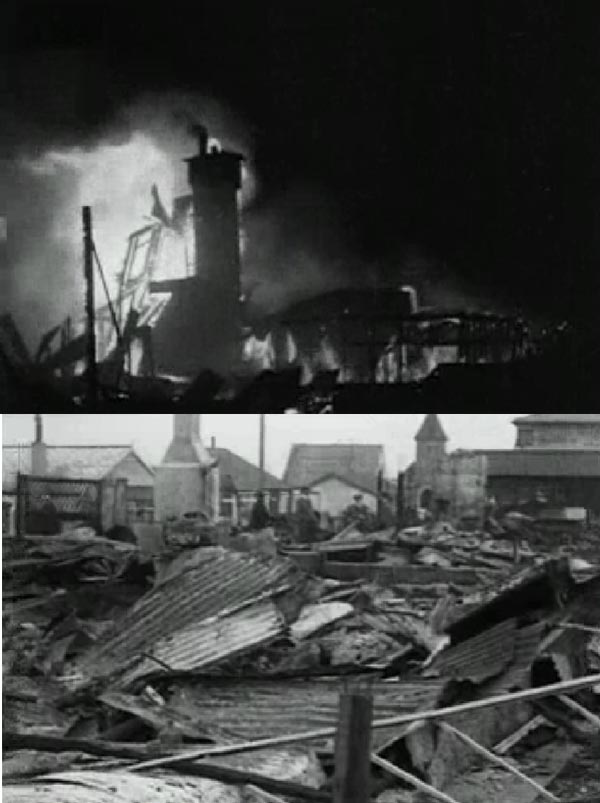
The following morning all that was left was smoking timber and a clear view to the Church of the Good Shepherd a little further down the road. It wasn’t long before a new bungalow was built in its place but this was a plain, unimaginative building and the only concession to its predecessor was the name it was given – Castledene.
B. Church (King’s Walk) to Mardyke.
Adjacent to the Church of the Good Shepherd where King’s Drive meets King’s Walk the following series of photos are of the same stretch of beach from different standpoints (and years) that take you further eastwards.
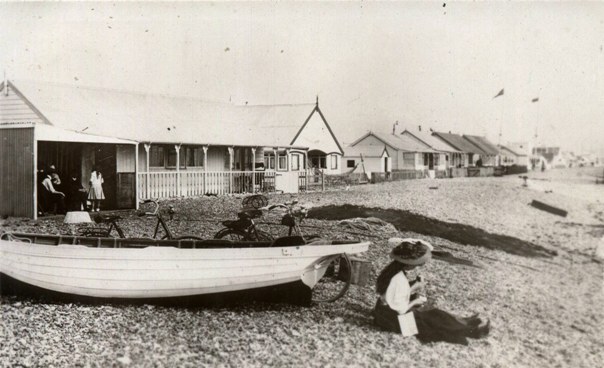
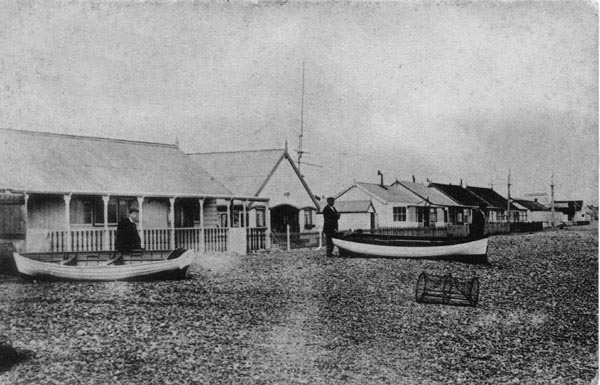
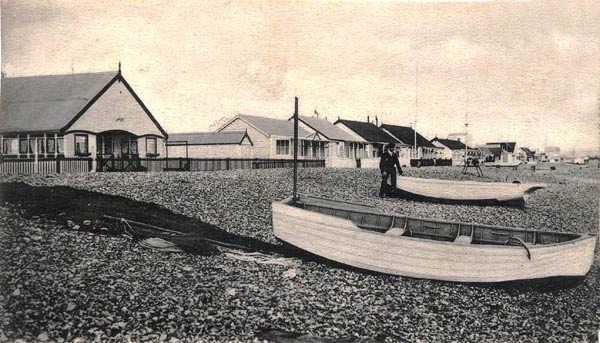
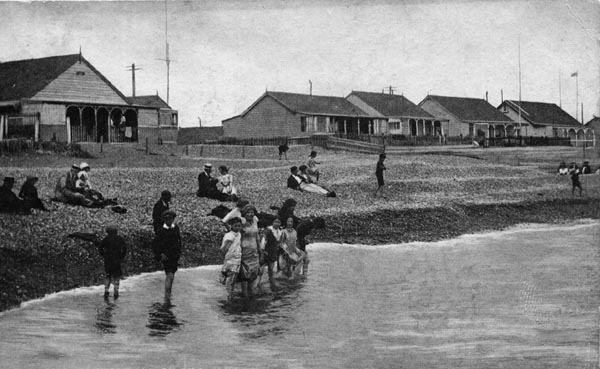
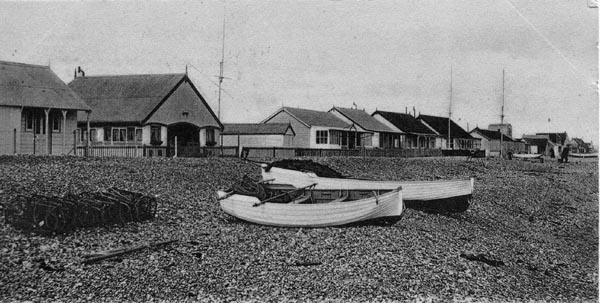
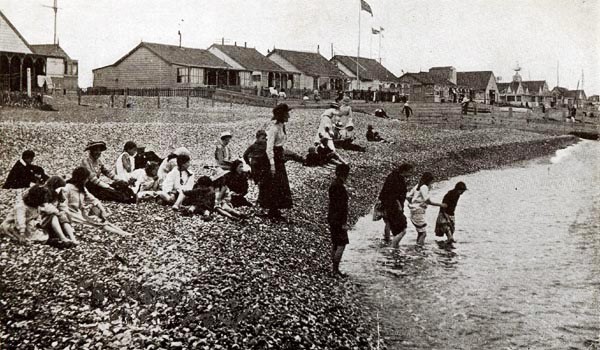
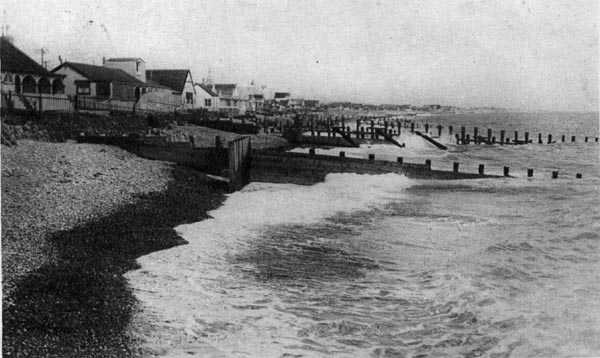
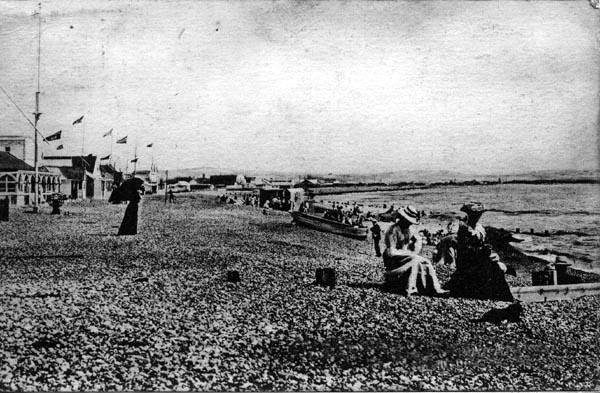
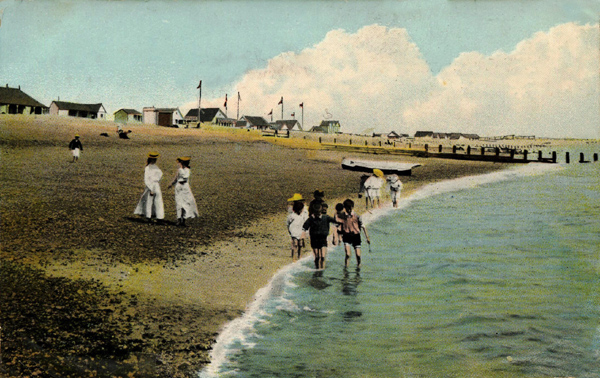
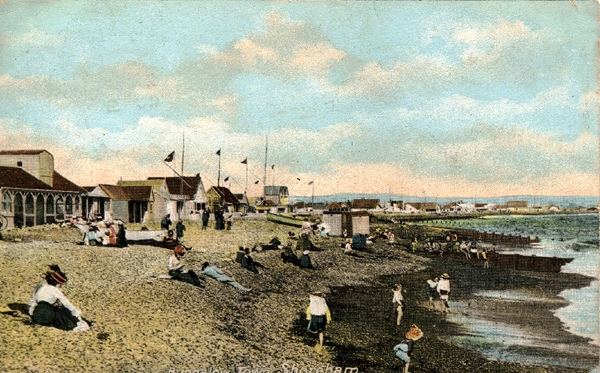
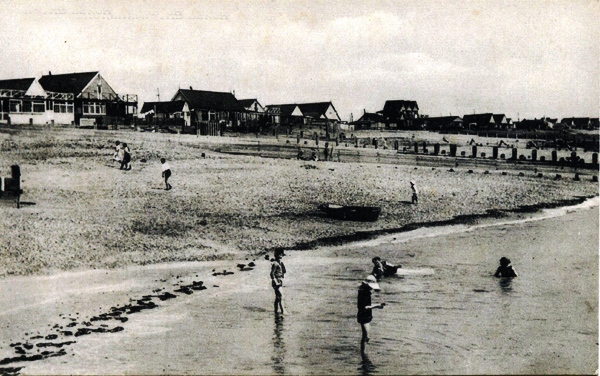
C. Mardyke to Beach Green
Having walked along the first half of King’s Walk beach this point is opposite the junction with Mardyke. The half hidden bungalow on the left with the large protruding gable is Sea Spray. The next is Coronation, Hirondelle, Salopia (wherein lived S. Gregory-Taylor, headmaster of Shoreham Grammar School and his wife during the 1930’s.) then Oceana.


Coronation Bungalow
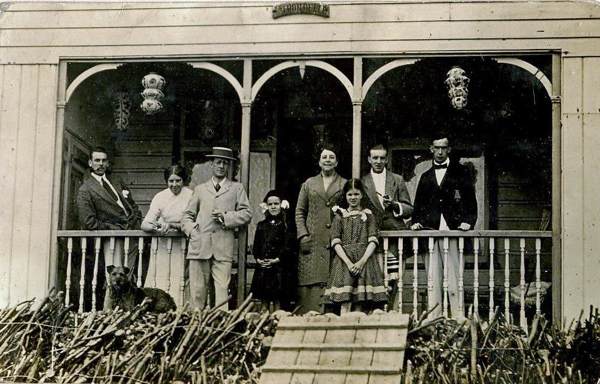
Hirondelle was owned and occupied by George Stanley Coles seen here in front (wearing a boater hat) with his family.
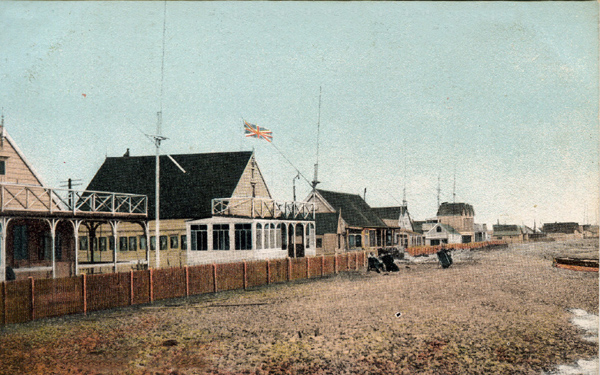
A little further on with, from the left, Oceana (half hidden), Etheldene, Shoreham Dene, La Vague, Mona (the small bungalow) then the distinctive three-gabled Villa Lido.
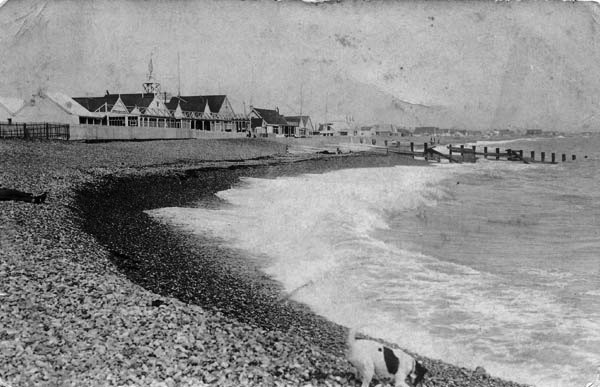
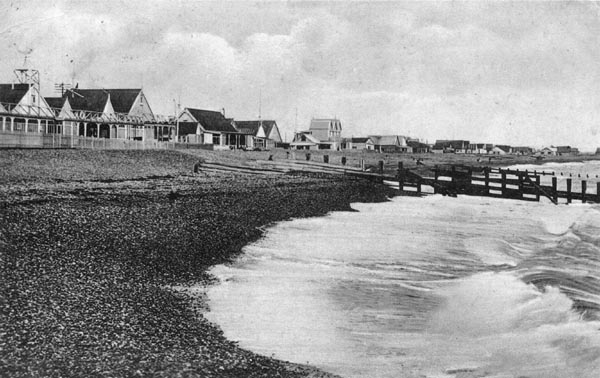
Drawing closer to Oceana, the dark-roofed bungalow on the left…….
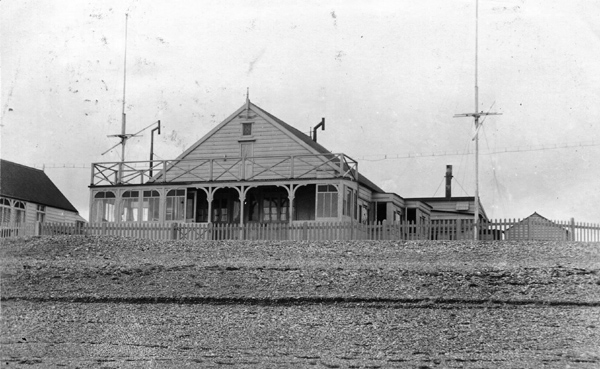
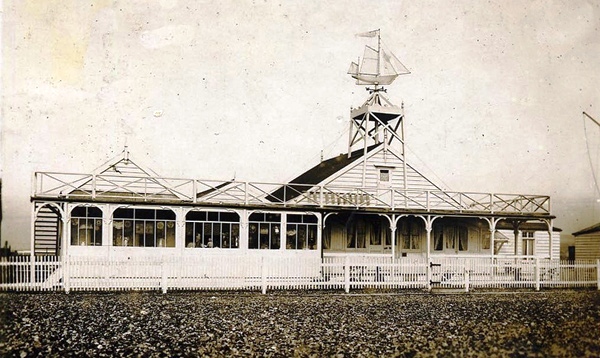 ………like many bungalows started life in a relatively modest way……..
………like many bungalows started life in a relatively modest way……..
….. but was eventually extended and capped by an ornate yacht – like weather vane………
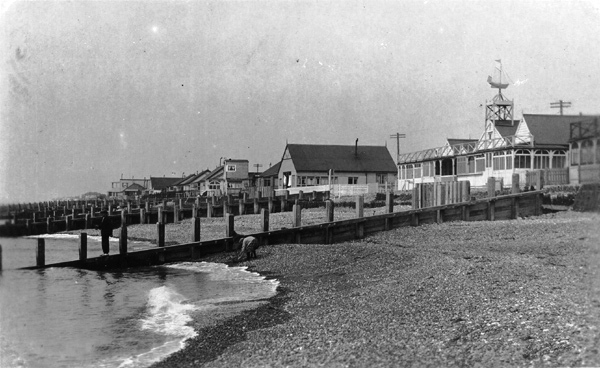 …….that could be seen in the distance in many of the old postcards of the time.
…….that could be seen in the distance in many of the old postcards of the time.
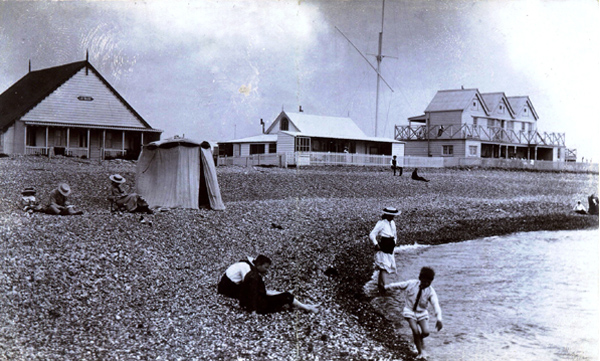
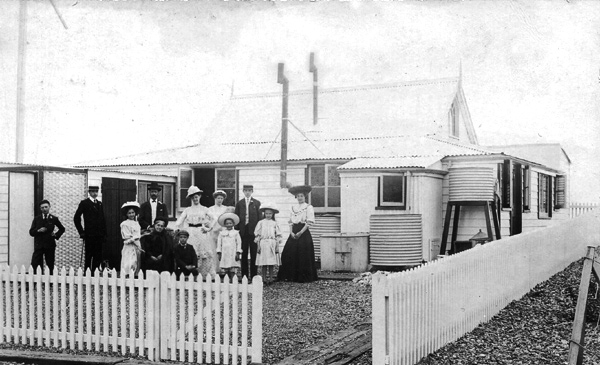 Moving on to La Vague on the left, Mona in the centre, and Villa Lido on the right. The latter was really a wooden house rather than a bungalow owned by Frederick Melville who, with his brother Walter, owned and managed the Lyceum Theatre in London.
Moving on to La Vague on the left, Mona in the centre, and Villa Lido on the right. The latter was really a wooden house rather than a bungalow owned by Frederick Melville who, with his brother Walter, owned and managed the Lyceum Theatre in London.
Owners took a great pride in their bungalows and would often be photographed with them. This rear view of Mona shows the family that occupied it then.
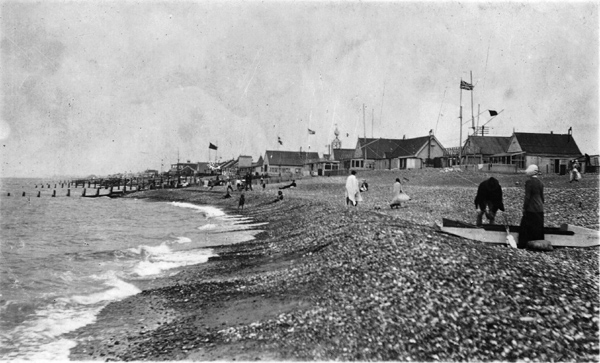
Moving on eastwards along the beach and glancing back, Oceana’s distinctive weather vane can still be seen in the middle distance..
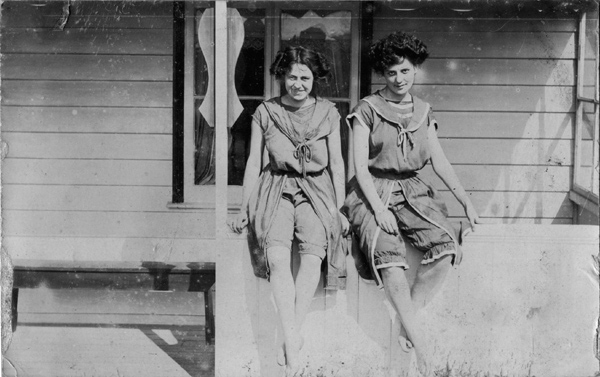
It was about here that Jessie Winton’s friend Rhoda lived (Jessie was the granddaughter of Shoreham’s celebrated photographer and Regatta organiser William Winton). Rhoda is on the left (from a photo in Jessie’s scrap book).
D. Beach Green to Ferry Road
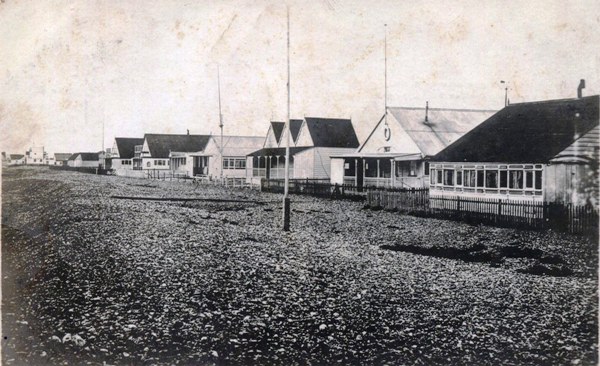
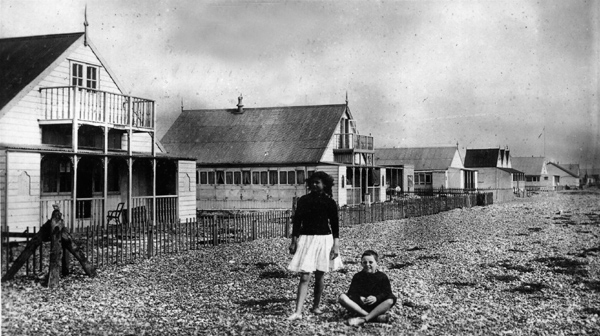 Having just passed Beach Green there is in the middle distance a three-gabled bungalow (unsurprisingly named Three Gables) and looking like a smaller version of Villa Lido that we passed earlier. Within the space of twenty years or so all the bungalows here had their names changed and only the Three Gables name survived.
Having just passed Beach Green there is in the middle distance a three-gabled bungalow (unsurprisingly named Three Gables) and looking like a smaller version of Villa Lido that we passed earlier. Within the space of twenty years or so all the bungalows here had their names changed and only the Three Gables name survived.
Walking on and looking back to Three Gables, Mimosa then Canacao, the railway carriage-fronted bungalow nearest to us.
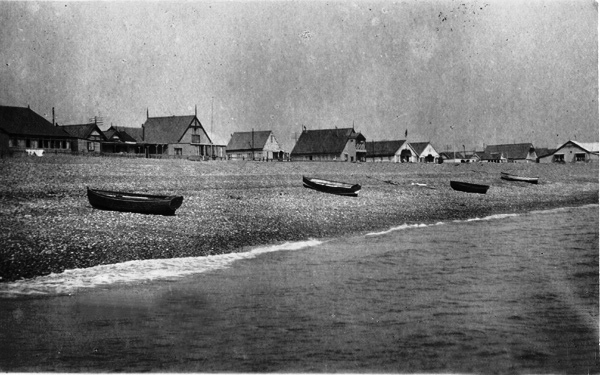
Turning eastwards again with bungalows, left to right, Canacao, Cabin, Woodcot, St.Vincent, Tit Willow, Miobe, Maelvy, Anchorage, Seaholme and Canaan.
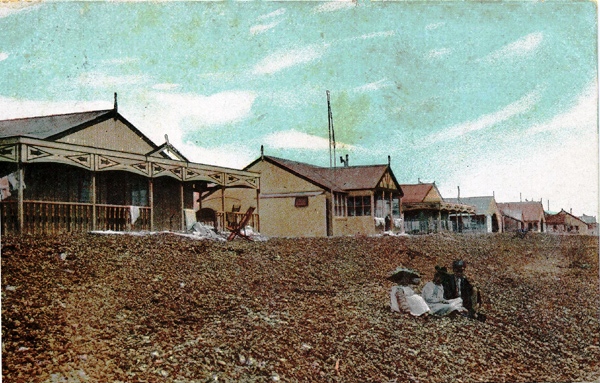
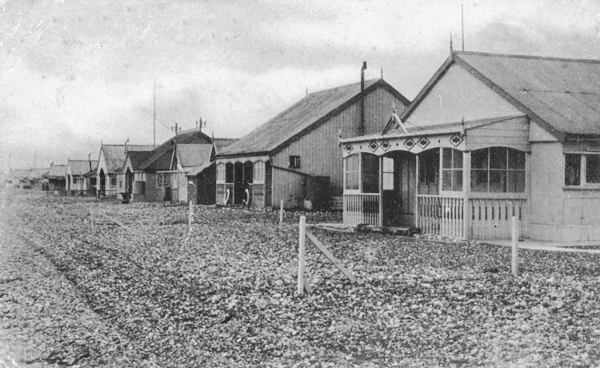
The same stretch of bungalows some good few years earlier – many have porches illustrating just how much they were altered.
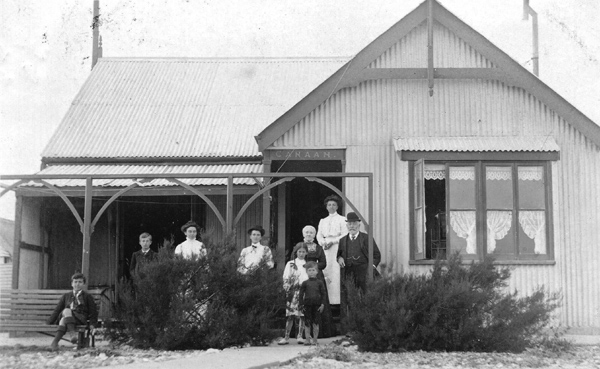
Canaan showing it’s south (sea) facing gable end with its’ owners, the Payne family in front.
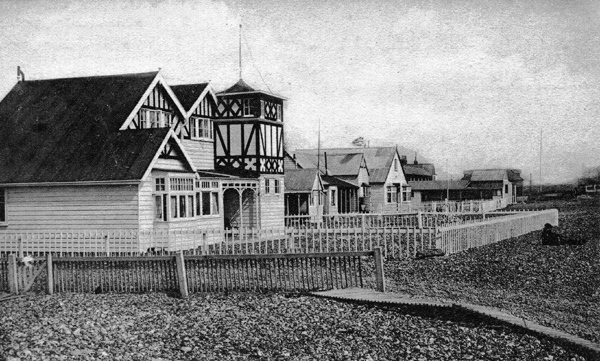
A short distance from Canaan, about two hundred yards from the junction with Ferry Road, stood this tudor style house. Beyond the white gabled bungalow in the middle distance there is a low, long roofed building behind which the roof of a taller set-back building can just be made out.. …..
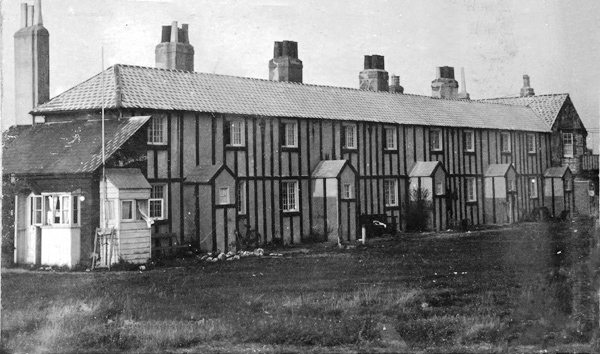
……..this was the terrace of houses used by coastguard officers and their families but was originally built in the 1820’s as a ‘Watch House’ or ‘Blockade House’ by the Government to combat smuggling. Then it was the only building on Shoreham beach and preceded the first bungalows by about 50 years.
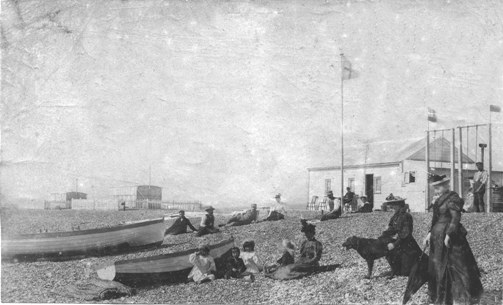
The gap in the buildings at this point allowed access from the bottom of Ferry Road (and still does) on to the beach. This rare 1880/1890’s photo shows the first carriages and ‘bungalow’ on the beach, probably in this very area. In 1900 the stretch of bungalows along the beach from the west only came as far as here with nothing else until the fort at the harbour end.
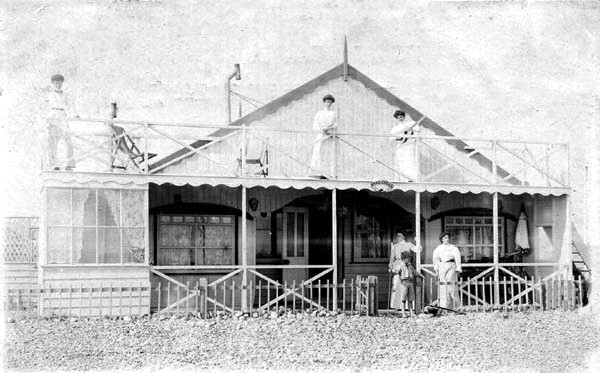 E. Ferry Road to Shingle Road
E. Ferry Road to Shingle Road
In 1910 this was the area where the lifeboat house stood and the rocket cart was kept. Next to the lifeboat house stood the bungalow Palghar seen here with the owner, Miss Forest and a number of attractive young ladies one of whom is playing a guitar – despite the stories that have been passed down concerning Bungalow Town’s bohemian society in those days it would perhaps be unfair to question the ‘entertainment’ available here – with many theatrical characters staying there they could well have been dancers or singers performing at Worthing or Brighton.
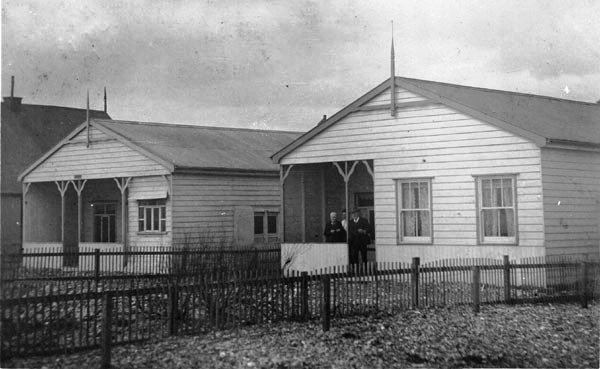
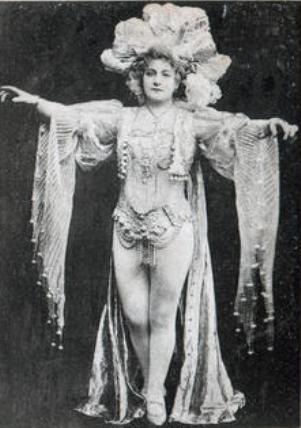
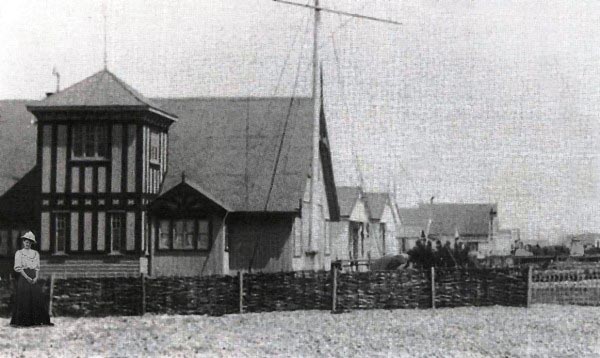 Next to Palghar was Pavlova , the home of Marie Loftus, a famous music hall singer of her day. Marie was one of the first of the theatrical people to make her home on the beach and it was through her that all the other celebrities followed. The two bungalows on the other side of Pavlova were Rosemary and Montrose, the latter seen here with the owners (since 1917) Charles & Mrs. Morris standing in the porch – he ran the local taxi service.
Next to Palghar was Pavlova , the home of Marie Loftus, a famous music hall singer of her day. Marie was one of the first of the theatrical people to make her home on the beach and it was through her that all the other celebrities followed. The two bungalows on the other side of Pavlova were Rosemary and Montrose, the latter seen here with the owners (since 1917) Charles & Mrs. Morris standing in the porch – he ran the local taxi service.
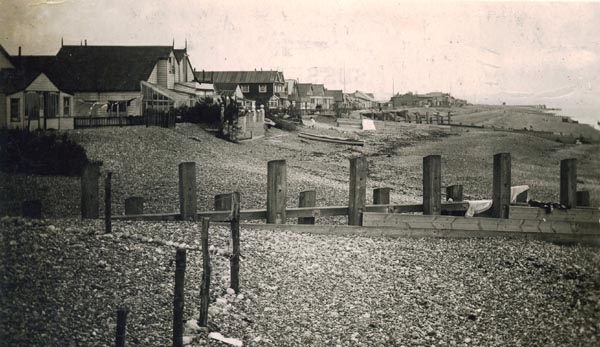
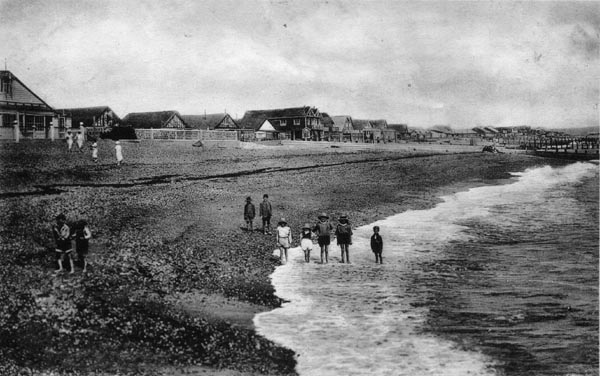
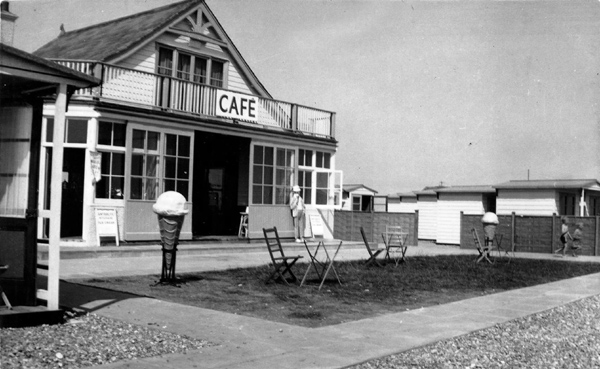 The lifeboat house and the old block house were soon replaced by bungalows and other residential buildings.
The lifeboat house and the old block house were soon replaced by bungalows and other residential buildings.
By the 1930’s the area was again cleared and replaced with flat-roofed huts to become a holiday Lido. Only the part-hidden bungalow on the left in the right hand photo above remained and became a cafe.
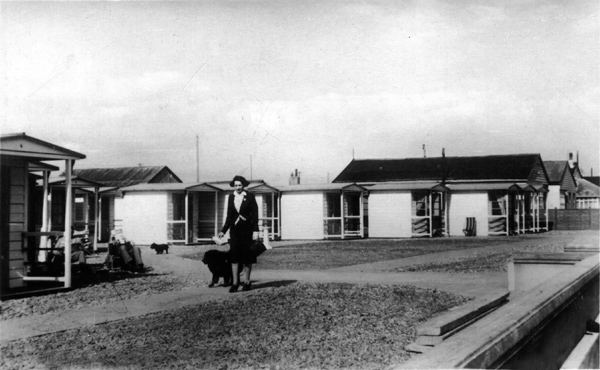
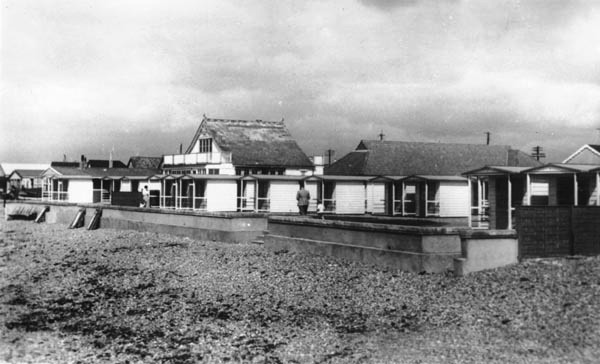
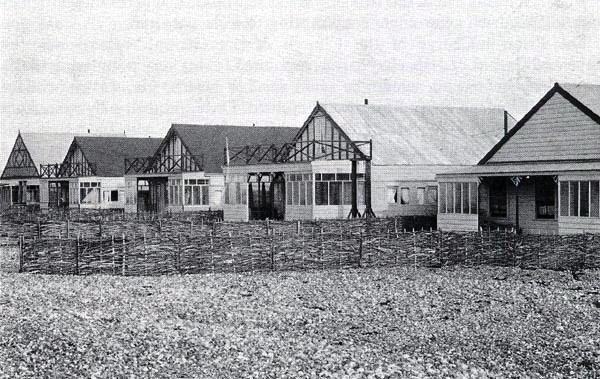 Moving on along the sea front of Old Fort Road there are a group of neat looking bungalows that were owned by some more celebrities. From the left was Will Evans, a comedian in Hop o’ My Thumb; at Silverdale Albert Le Fre, variety artist; at Arnside the Lupino family who were in musical comedy and pantomime; Francis Lyndhurst lived in Lyndora – Will Evans and he formed the Sunny South Film Company and shot most of their films at the fort; Norman Wolters, a theatre manager was in Fides.
Moving on along the sea front of Old Fort Road there are a group of neat looking bungalows that were owned by some more celebrities. From the left was Will Evans, a comedian in Hop o’ My Thumb; at Silverdale Albert Le Fre, variety artist; at Arnside the Lupino family who were in musical comedy and pantomime; Francis Lyndhurst lived in Lyndora – Will Evans and he formed the Sunny South Film Company and shot most of their films at the fort; Norman Wolters, a theatre manager was in Fides.
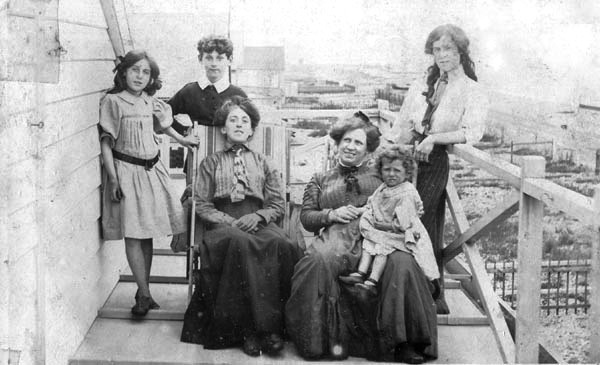
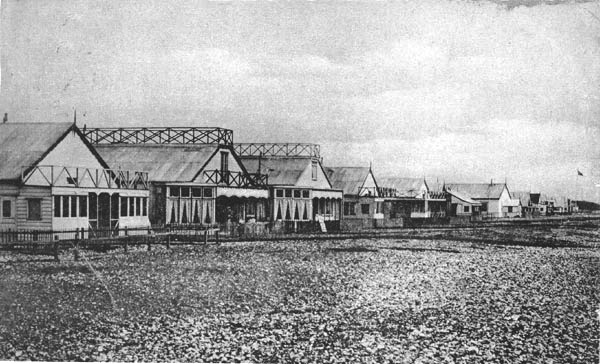 Many of the Bungalow Town photos were taken by Shoreham photographer William Winton. He knew Mrs. Earle, the previous owner of Fides (circa 1915) and took this shot of her (seated right) overlooking the beach although the balcony is not necessarily the one on Fides.
Many of the Bungalow Town photos were taken by Shoreham photographer William Winton. He knew Mrs. Earle, the previous owner of Fides (circa 1915) and took this shot of her (seated right) overlooking the beach although the balcony is not necessarily the one on Fides.
Similar, tidy looking bungalows continued along the Old Fort Road beach up to the junction with Shingle Road which was about three quarters of the way up behind the bungalows here.
 F. Shingle Road to the Fort
F. Shingle Road to the Fort
Thereafter the bungalows degenerated into more of a mixture towards the end of the beach.
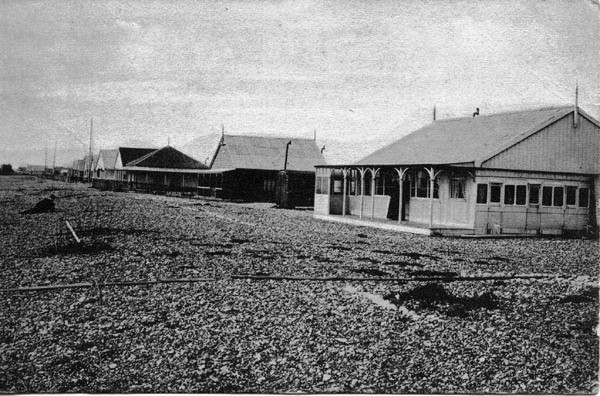 Five properties from the last bungalow east on the beach was La Boheme, the home of G. W. Glendenning. The ends of the carriages that usually made up the bedrooms can be clearly seen.
Five properties from the last bungalow east on the beach was La Boheme, the home of G. W. Glendenning. The ends of the carriages that usually made up the bedrooms can be clearly seen.
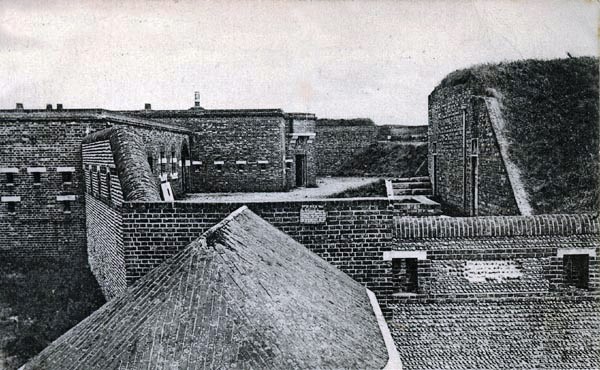
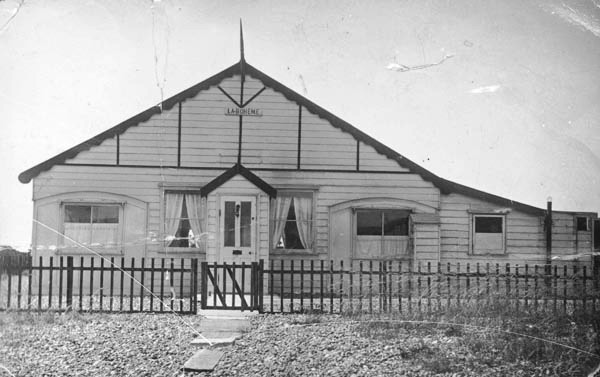 Then as now the Palmerston Fort was the ultimate building at the east end of the beach but during Bungalow Town’s heyday was still then a complete building with none of it yet demolished.
Then as now the Palmerston Fort was the ultimate building at the east end of the beach but during Bungalow Town’s heyday was still then a complete building with none of it yet demolished.
Roger Bateman
Shoreham
February 2011
Sources:-
Photos and postcards from the collections of Doris Steers, Peggy Bailey, June Stirling’s Winton Collection, the Sussex Archaeological Society’s Marlipins Collection and the author’s own.
1901 & 1911 census
1891 – 1940 street directories
Bungalow Town – Theatre & Film Colony by Neb Wolters
N.B. This article is adapted from the history portal of the Shorehambysea.uk web site.


My father was brought up in an orphanage in Shoreham from 1916 and he was a choir boy in the church at Bungalow town. He also learned to swim in the sea there. I am writing his biography and would like permission to mention this website and maybe copy a photograph if that’s alright.